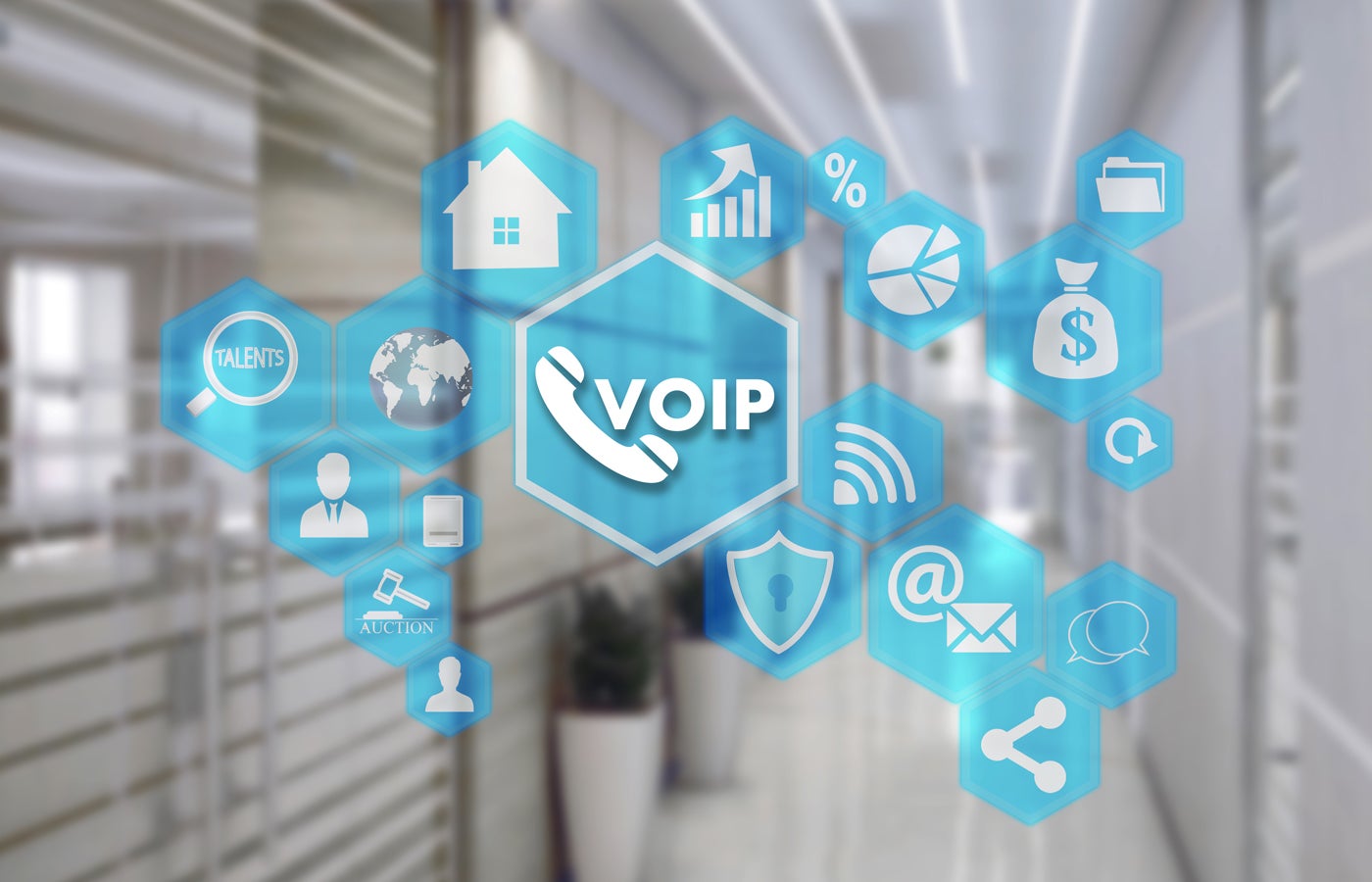Alexander Graham Bell invented the telephone in 1876. In 1915, he made the first transcontinental (coast-to-coast) telephone call, helping to create the public switched telephone network (PSTN).
Although much has changed since then, many of the basic functions of the PSTN remain the same. Like technologies inherited from postal services and radio stations, the PSTN still has useful applications today.
Businesses such as restaurants, gyms and clinics may find it useful to have a landline for local calls. A registered landline may also be a regulatory requirement for some.
If that's not the case for you, voice over internet protocol (VoIP) services, such as Nextiva and Zoom, are more affordable, offer better integrations, and allow for greater scalability.
This is not to say that the PSTN does not deserve praise – it has had a remarkable run as the world's premier communications system – but it is difficult to compete with the features and functionality of more modern VoIP services.
The evolution of the PSTN
The legacy of the PSTN begins with the telegraph networks of the mid-19th century. These networks carried coded electrical signals along copper wires. Telegraph operators entered and deciphered Morse code messages at both ends.
The first call
When Alexander Graham Bell spoke to his assistant, Thomas A. Watson, two miles away on the first telephone call, the connection used a downward dialing circuit. With this type of system, there was no ability to connect multiple phones, just a wire connected directly from one device to another.
Before bells and ringtones, early phones also had no way of notifying of an incoming call. Instead, users would whistle into their receivers to get attention.
The switchboard system
The next major innovation of the PSTN was the introduction of the telephone switchboard. Before the advent of this system, each telephone had to be connected by cable to another telephone.
The telephone switchboard system allowed users to connect to any other subscriber to the telephone service in their area. This process involved calling the switchboard and asking the operators to connect their line to that of the other subscriber.
Automatic transmission
Automatic switching systems were invented in the early 20th century, allowing users to connect to multiple telephones by dialing numbers, without the need for human operators. Automatic switching meant faster call setup, lower costs, and greater efficiency for the entire system.
Automatic switching also made it easier to expand telephone systems into more remote areas, and by design they were more scalable, making long-distance calling more feasible and networks more comprehensive.
Digital innovation
When researchers experimented with encoding voice signals digitally in the 1950s, analog technology gave way to digital innovation.
When digital transmission systems emerged in the 1960s, it became possible to convert multiple voice channels into a single signal for transmission. This capability further increased the overall capacity of the PSTN.
Similarly, the rise of digital switching systems in the 1970s brought about further improvements in call quality. Because digital channels were less prone to interference and noise, they were able to produce clearer and more reliable audio.
Digital switching systems also gave rise to new features such as call waiting, voicemail, three-way calling and caller ID. This perhaps paved the way for the integration of data transmission services such as those we use on the Internet today.
Finally, the rise of digital switching systems brought about the global standardization of many telecommunications networks. The implementation of digital standards allowed for greater interoperability between network providers, enabling seamless communication between those on different networks and in different countries.
Integrated Services Digital Network (ISDN)
ISDN emerged in the 1980s to replace older analog systems. It was a versatile digital standard that could simultaneously transmit voice, video, and other data over a digital network.
ISDN technology was quickly adopted by the telecommunications industry and businesses as it offered better call quality, faster data transmission, and allowed for video conferencing. ISDN's popularity did not wane until broadband and cable Internet services emerged in the late 1990s.
Broadband and the rise of mobile telephony
By the time broadband arrived in the early 2000s, the Internet was already an integral part of social and business life. VoIP services and mobile phones that supported text and voice calls existed.
Meanwhile, the PSTN remained a common way to contact a business or professional.
When cell phones became smartphones, things changed. Apps can now send messages and make voice and video calls. VoIP softphones can now integrate with other business applications, making it easier to schedule appointments, send follow-up emails, and keep track of a busy schedule.
The PSTN today
Some countries, such as the United States, Australia and Singapore, are preparing to retire their national PSTN networks. Other countries, such as the Netherlands, Sweden, Germany and Japan, have already switched off their PSTN networks.
The UK will close its PSTN and ISDN services in 2025.
Most (if not all) of these countries are replacing their PSTN systems with Internet Protocol (IP) networks as they are better equipped to handle modern communication and data transfer needs.
In the United States, you can still get traditional telephone service (commonly known as POTS in the telecommunications industry). As more of the country moves to IP networks, this may change, but for now, you can still install a copper-wired phone for voice communication.
PSTN vs VoIP
VoIP works just like traditional telephony, except it has additional support for text and video messaging. It also uses the Internet for its connections instead of a telephone exchange system.
Since PSTN technology uses analog signals traveling along a copper wire, it does not support multiple data channels and is subject to noise and interference.
In contrast, VoIP uses encrypted data packets that are sent over the Internet and reassembled at the other end, offering better call quality and reliability. VoIP services also integrate with other business applications using application programming interfaces (APIs).
For example, an integrated customer relationship management (CRM) system can help a company maximize its lead generation and customer retention potential. This type of integration is not possible with analog telephone systems.
PSTN costs
Traditional landline telephone services typically have a monthly service fee. This fee covers a set amount of local and long-distance calling minutes. Businesses may pay service fees per line or per user. Typically, the destination of the call determines their rates.
For individuals, purchasing a landline phone is relatively inexpensive, and can even be cheaper than purchasing a new VoIP-enabled device.
However, businesses often have different needs. For example, a company with many agents might need a private branch exchange (PBX), multiple phones, and professional installation.
Periodic maintenance is often also required for a PSTN phone system. This, coupled with the need to upgrade hardware periodically, can make PSTN expensive.
VoIP costs
VoIP services are often free for individuals. In many cases, the only equipment costs are IP phones and adapters.
These costs are typically lower than the initial installation costs for PSTN services.
Some VoIP providers offer subscription-based packages that include a certain amount of local and international minutes. Other VoIP services use a pay-as-you-go model, where users are charged only for the data they use.
For businesses, setting up a VoIP system involves purchasing IP phones, routers, and possibly a PBX. This usually requires a monthly fee, either per user or per extension.
Integrating an existing phone system with a VoIP service creates additional costs.
Advantages of PSTN
- Reliability: The PSTN has been around for many decades; its infrastructure is reliable, albeit at the expense of some functionality.
- No Internet required: A landline connection can work without the Internet.
Advantages of VoIP
- Initial cost: VoIP systems are generally less expensive to install and maintain than PSTN systems, for both businesses and individuals.
- Monthly costs: VoIP services typically have lower monthly costs than PSTN landlines.
- Feature-rich: VoIP services offer many features that support business growth.
Using Legacy PSTN Equipment with VoIP
Analog phones and fax machines can be used with VoIP through an analog telephone adapter (ATA). This device bridges the gap between PSTN and VoIP equipment by converting analog signals into digital ones that can be transmitted over the Internet.
Similarly, an ATA can convert incoming digital signals into analog. Using an ATA can be a great way to take advantage of the benefits of VoIP services while utilizing existing infrastructure and hardware.
VoIP phones can also make calls over the PSTN. When you make a VoIP call, it is routed through your VoIP service provider. This service provider uses a gateway that acts as a bridge between the analog nature of the PSTN and the digital nature of VoIP.
Businesses that want to integrate their PSTN and VoIP systems need a Session Initiation Protocol (SIP) gateway, which allows them to take advantage of the features of a VoIP service while maintaining connectivity to the PSTN network.
Generally, business owners can configure a SIP gateway to accommodate higher call volumes. PSTN systems are not scalable in this way.
If you're looking for a VoIP service provider, keep in mind that many of the top VoIP services offer slightly different features for specific needs of individuals and businesses. For example, Nextiva is one of the most feature-rich services, RingCentral works great for small businesses, and Ooma is great for teams working remotely.












